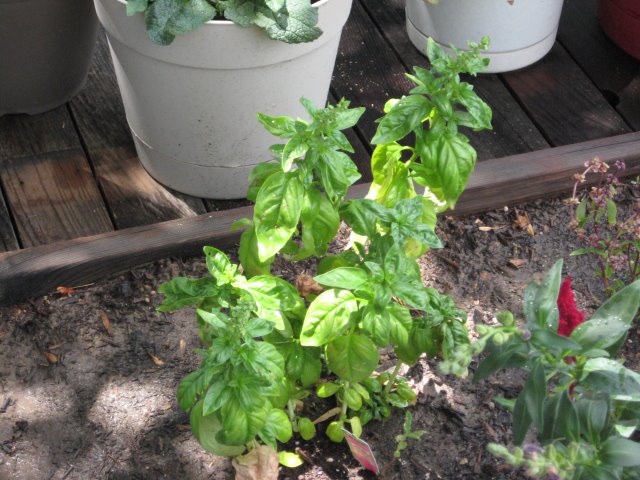 Calendula-Calendula officinalis
Calendula-Calendula officinalisCalendula is a wonderful little herb. While commonly called pot marigold, it's not related to marigolds. Botanically speaking, it's a member of the Asteraceae family meaning it's more like a daisy than a marigold.
Because of that, if you're allergic to pollens of flowers from that family (namely ragweed), it's better to avoid it since it can cause a similar allergic reaction. The NIH also recommends that it not be taken if you're also taking certain sedatives. A tea made with calendula should not be consumed during pregnancy. As always, please make sure to take medicinal herbs with caution and knowledge!
However, it's still a safe herb to use and is often used by herbalist. The flowers are eatable (although some find it bitter), can be made into a tea, and used topically. It's typically used to treat sore throat and
mouth, menstrual cramps, and ulcers. Calendula has anti-inflamatory properties so it can be used to help clear up acne and rashes (provided the user isn't allergic!). It's also used to help with pain, swelling and to heal wounds. Neat!
Here's a handy, dandy how-to on making your own calendula oil which you can use straight or in making a cream or salve (depending on how you like to use it).
What you'll need:
What you'll need:
- Clean jar with a lid (I use a mason jar because I can and always have them on hand)
- Dried calendula petals* (grow your own or order them from a green friendly place like Rose Mountain Herbs)
- Oil (You can use almost any oil but I recommend a skin friendly oil like jojoba, grapeseed, olive or coconut. I like a half and half blend of olive and coconut)
Make your oil:
There are two methods you can use; cold infusion or hot infusion. I'll explain both
Cold infusion:
This is the easiest method and you can do this with a lot of different herbs, not just calendula. It's also a preferred method because herbs can be delicate and heating can destroy some of that herby goodness.
- Fill your clean jar with your dried herbs (about half way full...so you'll want to decided what size jar you're going to use when you buy/harvest your herbs).
- Top with your oil. Fill the jar up as far as you can without spillage (otherwise you can end up with your very own slip and slide kitchen floor.)
- Put a lid on it!
- Once your jar is closed up tight, you'll want to keep it in a warm sunny place for 3-4 week. Shake it every once in a while and watch the beautiful golden color develop (if you're using calendula)
- After a month or so, you'll want to strain your herbs out of your oil. You can use a tea strainer, muslin, cheese cloth or my favorite, a jelly bag ( I like the jelly bag because I can let it drain out with very little effort or monitoring on my part.)
That's it! You are done, my friend, and you can keep your oil in a sealed container for up to a year (a dark place is better than in full light) or use it in other products you want to make.
Heat infusion:
I use this method because I work with coconut oil a lot and it tends to solidify if it dips below 80 or so (which is also why I blend it with olive oil to create a slightly more liquid oil). You can also use this method if you don't want to wait a month to enjoy your oil.
What you'll need:
In addition to the supplies above, you'll need something to heat your oil in like a crock-pot, a sauce pan or a double boiler. I use a double boiler because I'm lazy and there isn't as much risk of burning your oil this way.
- Take your herbs and oil and add them to your choice of vessel (crock-pot, sauce pan, etc...)
- Heat these herbs and oil on low for 2- 4 hours. Yep, two to four hours. If you can stand to do it longer, go for it but remember, you have to stir frequently because you just want the oil to heat, not cook.
- After you've finished heating this mixture, let it cool. If you're using an oil that solidifies (like coconut), don't let it cool to the point that it hardens so you might have to strain it while it's still pretty warm. Other wise, let the mixture cool and stain out the herbs in the same method as cold infusion.
- This oil store the same way you would the cold infused oil.
And there you have it! A lovely oil made with your calendula.
 |
| Here's some baby calendula from my herb garden last year! |
*Use dried herbs because fresh herbs contain moisture, meaning water, and water in an oil infusion can lead to the oil turning rancid. Aside from losing all your hard work, you could have a stinky mess on your hand or botulism. People do use fresh herbs from time to time and are just fine but why risk it?
















